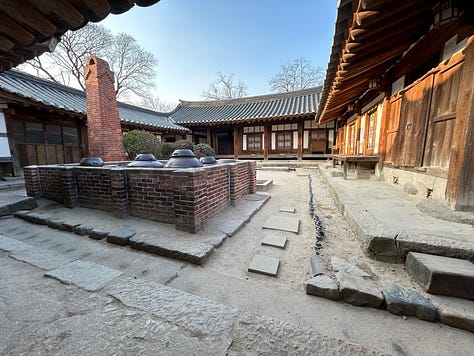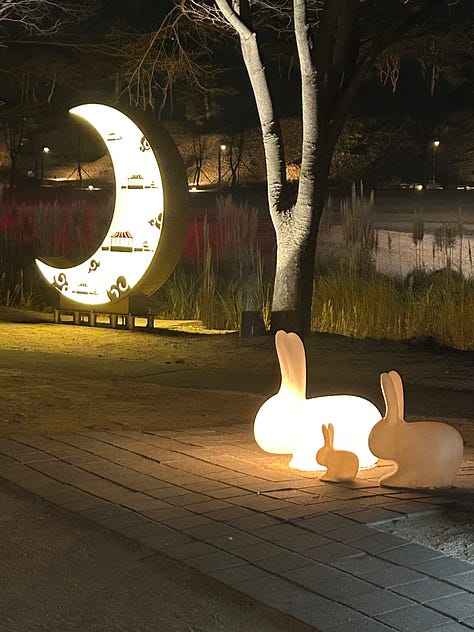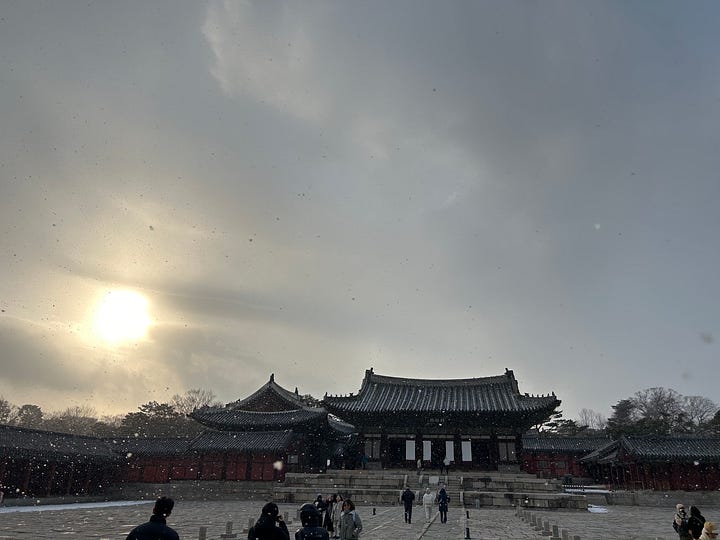Over the years there have been many times when things stopped making sense and everything just seemed confusing - what I thought I knew didn’t quite stand up to what I was experiencing and learning… and it was and is in this space of not knowing that new perspectives emerge.
I remember a dialogue once, many many years ago where someone complained about why do we have to experience discomfort when learning new things… and I think there are many things we learn that do not require discomfort - but it is in those things that require unlearning as much as learning where the discomfort happens. In a way it’s like losing our way. The path that we knew well is suddenly not reliable and we discover that it is actually probably not taking us in the direction that we actually want to be going in… and that over time others/norms have convinced us that this was the only path or “the best” path and failed to acknowledge that there are in fact many different possibilities.
Ten years ago I struggled with the term “the competent child” and what is truly means, and how it was often being interpreted, and how it was being put in practice and the gaps between all of these.
Being in South Korea at the moment I realise that everything that I know about play is incredibly Western - despite trying to decolonise my ludic understanding I fully realise now just how entrenched I am in the Western way of perceiving play, childhood and adulthood. Because it is different over here - and I notice that the few public playgrounds that I have seen (because there are truly not many - most belong to private apartment blocks) are designed in a Western fashion and have primarily the function of children being physically active rather than an invitation to play - and I think this is a big difference.
I have also noticed that the line between childhood and adulthood seems more blurred - children seem more adult like (the expectation of concentration, being still, being quiet etc is met by the children - but this expectation is delivered with a gentleness - at least what I have seen amongst the families I have observed in public) - the adults are given permission to be more child-like in the sense of the joy of playfulness is not exclusively for children. In fact I think the cities here (that I have visited 2 large 1 small) are more geared up to adult play… as if to say, once you have done all your studies you are welcome to play.
I am not saying this is a better way of being with play, it’s a different way of being with play - I like the intergenerational part of it, I am not so keen on the suppression of children’s play freedom.
But what is play freedom?
Sometimes I think it’s often interpreted as free from adult - yet the most beautiful play moments I have seen here have included adults - for example a mother and child playing rock, paper, scissors to go up the stairs - who ever won got to take a step up. The whole outdoor stairway was instantly filled with giggles and joy that infected everyone who passed.
I keep coming back to the word autonomy rather than freedom - because we can create a collective autonomy - it’s not so much
freedom but possibilities
independence but interdependence
individuality but being our authentic selves together with others
self-direction but collaboration
child-led but together-led
And I think many non-Western cultures are better at this collective autonomy than we are. In Julian Baggani’s (2019) book “How the World Thinks”, he writes about a meeting with a Chinese woman who has lived in Edinburgh for five years. When he asked her about the differences between China and Scotland, she commented that in China people strive to please others, while in Scotland people strive to please themselves, and she described this value of pleasing others as “harmony”.
The word “harmony” comes from the Greek language, ἁρμονία (harmonía), which means “a fastening or joining.” The concept of harmony goes back as far as Pythagoras. Thus, it is obvious how the word harmony is used to refer to a connection between people who join in “peace” (this is another word worth fully exploring to understand).
The more I have thought about Original Learning as an educational “utopia”, the more I believe it is about peace - where harmony is when all the different instruments can make music together, that is, all the different people can contribute in their own way. This does not mean that everyone agrees all the time, but that life has a rhythm that gives permission and that people have the knowledge and/or curiosity to be able to make informed decisions that neither diminish nor harm others. In play, this harmony can sound in many different ways - noisy, laughing and screaming when it comes to adventurous play, or, as I describe in my book “Riskfylld Lek och Undervisning”, like a loud purring cat. Harmonious play is not only the quiet and calm games/play. It is when the play has flow together with everyone who wants to participate and with the others playing in the same space.
Maybe it is because children do not get enough time to be in flow, that they do not know what harmony or peace feels like in the body?
This makes me think of the Korean seemingly lack of spatial/social awareness when walking on streets. If they have not played enough as children both inside and outside they will not have developed the practical skills of being aware of the bodies of others and how to avoid crashing in to them. Despite everyone being very polite, and that etiquette is an important thing in South Korean society, there is an unusual amount of walking immediately in front of someone else and pushing by, not with any kind of meanness, but like they fail to register another person is there.
So at the moment I am thinking about how would I design a playground in South Korea based on my observations of how adults and children play - because I think it needs to be an intergenerational play-space. It needs to be aesthetic, with photo opportunities (because taking photos is a big part of the play culture here), I also think it should be linked to storytelling, especially Korean traditional stories and culture, as I notice a enormous need to replace the Japanese occupations with their own Korean history and stories that were consistently erased by their occupiers. So in a way the play-space also becomes a space of healing. I think it should connect to pedagogy, but not in the awful designs usually seen in playgrounds where number puzzles etc are added, but as they play they learn about the history/local culture. I have over the years studied play in museums through observation - and we can create playful activities where learning can happen, but the environment can also lend itself to play where children learn - both are valuable, but they require the adult and the space to interact with the children and their flow in very different ways.
I have also noticed that light shows are quite the thing here, so why not being that into the play-space too, because light is a fabulous loose part!!
This play space in Växjö, Sweden has a great use of light in a playful way. Although I thought that parts were a bit too dark, it is worth thinking about how light can be better used. The playspace also was designed to capture the feel of when Carl von Linné was alive - so the children play amongst the feeling of history and get to notice that the structures look and feel different from modern ones. There are some other playgrounds in different towns in Sweden that use this local history design idea and include artefacts inside - perfect for play and learning without the need for teaching - but absolutely the opportunity to respond as teachers when appropriate (ie not interrupting the flow but responding to the children!!
The above is a playground in Copenhagen, Denmark. Here they have create a series of rooves found in Copenhagen to climb and invent games on. The traditional houses, palaces, temples and shrines have the most amazing roofs to this could absolutely be a possibility - it’s aesthetic, photos could easily be taken, and if there are stories that connect to being on roofs then all the better - these had buttons on them for bird sounds - but some other interactive digital/electronic element could be added that is relevant in South Korea.
Here come a few photos that I think could inspire playgrounds… including a mural of children’s games (including squid game, which is a traditonal children’s game)














Your reflections resonate deeply with me, especially in considering the epidemic of mass suicide and depression in South Korea. During my travels in South Korea and other Asian countries, I was struck by the intense focus on academic achievement and the limited space given to play and creativity. It felt heartbreaking to see how this pressure could suppress opportunities for joy and connection—basic needs that we often overlook but are so essential for mental health and overall well-being.
I’ve often wondered if this lack of unstructured play, both for children and adults, contributes to the widespread struggles with mental health. To me, it seems tragic that both Western and Far East Asian societies have shifted so much toward valuing academics and productivity while ignoring ancestral knowledge about the importance of play, creativity, and moments of flow.
Your idea of creating intergenerational play spaces rooted in cultural storytelling and history really struck a chord with me. I love the idea of these spaces not only as places for fun but as sanctuaries where people can reconnect with themselves, with others, and with their cultural heritage. It makes me hopeful to think that something as simple as designing spaces for joyful interaction could be a step toward healing and rebalancing these societal pressures.
Born and raised in South Korea, I had a lot of thoughts reading this.
Especially, reading this part, "Once you have done all your studies, you are welcome to play." almost brought me sadness, as I was one of those suppressed kids who did not know what to do with hormones whirring yet tied to the chair 15 hours a day. The agony brought me a lot of so-called "success," but honestly, I don't know if it was worthwhile, as I can never go back to being a child while you can start studying any time you want (maybe this could be my privilege -- Idk). I think that long-term suppression (or lack of natural release) often brings a lot of problems in adulthood among Koreans, again, my hypothesis.
I wonder, have you been to a "Kids' Cafe" in Korea? I wonder what you think about that too :)
Also, I did not know you were located in Korea! It is a wonderful place packed with a long history, resilience, and traditional and unique culture. Hope you are enjoying your time there!